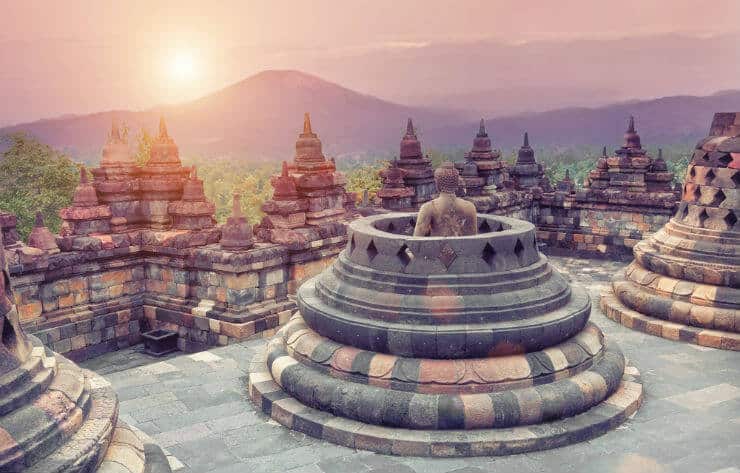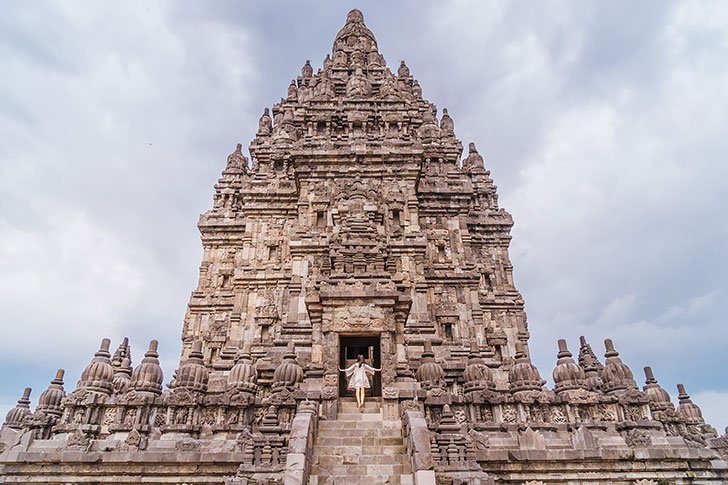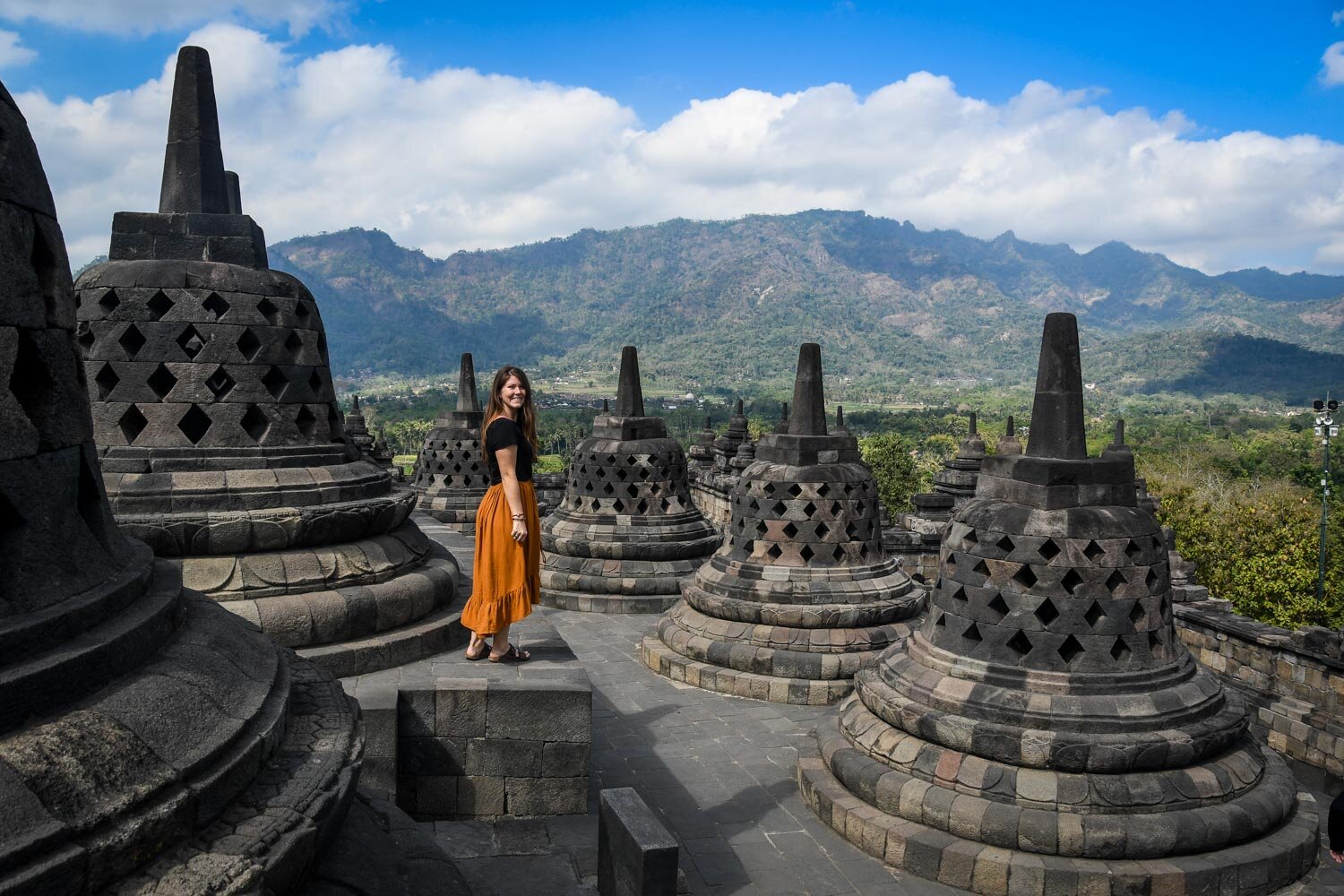
Yogyakarta, affectionately known as "Jogja," is a city that pulses with the soul of Java. More than just a destination, it’s an experience, a living museum where ancient traditions intertwine seamlessly with a vibrant modern spirit. From the majestic spires of Borobudur to the bustling alleyways of Malioboro, Jogja offers a captivating journey through history, art, and the very essence of Indonesian culture. If you’re seeking a destination that will enrich your mind and stir your senses, look no further than this enchanting city.
A Glimpse into Yogyakarta’s Rich Tapestry: History and Heritage
Yogyakarta’s story is deeply rooted in the Javanese kingdoms, particularly the Mataram Sultanate, which established its capital here in the 16th century. The city’s identity is inextricably linked to its royal heritage, with the Sultan’s Palace, or Kraton Ngayogyakarta Hadiningrat, serving as the spiritual and cultural heart of the city. This sprawling complex, a masterpiece of Javanese architecture, is not merely a historical relic but a living testament to the enduring legacy of the sultans. Within its walls, you can witness traditional dance performances, admire intricate carvings, and gain a profound understanding of Javanese court life.

Related Articles about Yogyakarta: A Tapestry of Culture, History, and Wonder:
- Canada: A Land of Infinite Horizons and Unforgettable Adventures
- Indonesia: A Tapestry of Wonders – Unveiling the Archipelago’s Top Attractions
- France: A Tapestry of Timeless Charm, Culinary Delights, and Unforgettable Experiences
- La Dolce Vita: A Connoisseur’s Guide to Italy’s Best Hotels and Unforgettable Experiences
- London Calling: Your Ultimate Guide to the Best Hotels and Experiences in the Capital
The city’s history is also marked by its significant role during the Indonesian National Revolution. Yogyakarta bravely declared itself the capital of the newly independent Republic of Indonesia in 1946, a testament to its patriotic spirit. This period has left an indelible mark, with numerous historical sites and museums dedicated to preserving the nation’s struggle for freedom.
Beyond its royal and revolutionary past, Yogyakarta has long been a center for art and education. Its reputation as a hub for Javanese arts, crafts, and performing arts has earned it the moniker "The City of Culture." This artistic vibrancy is palpable, from the batik workshops to the shadow puppet performances.
Unveiling the Crown Jewels: Top Attractions in Yogyakarta
Yogyakarta boasts a wealth of attractions that cater to every interest, from history buffs to nature lovers and art enthusiasts. Here are some of the absolute must-sees:
1. Borobudur Temple: No visit to Yogyakarta is complete without a pilgrimage to Borobudur, the world’s largest Buddhist temple and a UNESCO World Heritage Site. Built in the 9th century, this colossal monument is a breathtaking display of Javanese architecture and Buddhist cosmology. Its tiered structure, adorned with thousands of intricate bas-reliefs and hundreds of Buddha statues, tells stories of the Buddha’s life and teachings. Sunrise at Borobudur is an almost spiritual experience, with the mist-shrouded landscape slowly illuminating the magnificent structure. Allow ample time to explore its many levels and absorb its serene atmosphere.
2. Prambanan Temple: Just a short drive from Borobudur lies Prambanan, a magnificent Hindu temple complex and another UNESCO World Heritage Site. Dedicated to the Trimurti – Brahma, Vishnu, and Shiva – this architectural marvel is a testament to the grandeur of ancient Javanese Hinduism. The towering spires of the main temples, particularly the Shiva temple, are awe-inspiring. The intricate carvings depicting scenes from the Ramayana epic add another layer of cultural richness to the site. Evening performances of the Ramayana ballet against the backdrop of the illuminated temples are a truly unforgettable spectacle.
3. Sultan’s Palace (Kraton Ngayogyakarta Hadiningrat): As mentioned earlier, the Kraton is the beating heart of Yogyakarta. This vast complex is a living museum, showcasing the royal family’s history, art, and traditions. Explore the various courtyards, audience halls, and royal residences. Witness traditional Javanese gamelan music performances, graceful Javanese dance displays, and demonstrations of traditional crafts like batik making. It’s an immersive dive into the soul of Javanese royalty.
4. Taman Sari (Water Castle): Adjacent to the Kraton, Taman Sari offers a glimpse into the leisurely pursuits of the sultans. This former royal garden and bathing complex features a unique network of underground tunnels, a picturesque artificial lake, and bathing pools. It was once a place of relaxation, meditation, and secret meetings for the royal family. The intricate architecture and the sense of mystery surrounding its history make it a fascinating place to explore.
5. Malioboro Street: This bustling thoroughfare is the vibrant artery of Yogyakarta, a sensory overload of sights, sounds, and smells. Malioboro is famous for its endless rows of shops selling everything from batik clothing and silver jewelry to street food and souvenirs. It’s a fantastic place to haggle for bargains, sample local delicacies like Gudeg (jackfruit stew), and soak in the energetic atmosphere of the city. As evening falls, the street transforms with street performers and a lively night market.

6. Ullen Sentang Museum: For a deeper appreciation of Javanese art and culture, the Ullen Sentang Museum is a must-visit. This museum houses an impressive collection of Javanese artifacts, including antique furniture, traditional weaponry, gamelan instruments, and ancient manuscripts. The museum’s tranquil setting and well-curated exhibits provide a comprehensive overview of Javanese artistic heritage.
7. Mount Merapi: For the adventurous, a trip to Mount Merapi, one of Indonesia’s most active volcanoes, offers an exhilarating experience. Guided jeep tours take you across the lava fields from previous eruptions, offering dramatic landscapes and a sense of the volcano’s raw power. You can also visit the Museum Sisa Hartaku (My Remaining Treasures) which displays artifacts salvaged from the volcano’s destructive eruptions.
8. Imogiri Royal Cemetery: A short journey south of Yogyakarta leads to the Imogiri Royal Cemetery, the resting place of past sultans and their consorts. This sacred site is a significant cultural landmark, characterized by its unique Javanese architecture and serene atmosphere. Visitors are often required to wear traditional Javanese attire to show respect.
Planning Your Jogja Adventure: Essential Travel Tips
To make the most of your Yogyakarta experience, consider these practical tips:
- Currency: The Indonesian Rupiah (IDR) is the local currency. ATMs are readily available in the city, and credit cards are accepted in most hotels and larger establishments, but it’s always good to have some cash for smaller vendors and street food.
- Language: Bahasa Indonesia is the official language. While many people in tourist areas speak some English, learning a few basic Indonesian phrases will be greatly appreciated.
- Etiquette: Javanese culture is known for its politeness and respect. Dress modestly when visiting religious sites, and always remove your shoes before entering homes or temples. It’s considered rude to point with your index finger; use your thumb instead.
- Bargaining: Bargaining is common in markets and with street vendors. Approach it with a friendly smile and a sense of humor.
- Connectivity: Wi-Fi is widely available in hotels, cafes, and some public areas. Consider purchasing a local SIM card for affordable data.
- Health: Consult your doctor about necessary vaccinations before your trip. Drink bottled water and be cautious with street food if you have a sensitive stomach.
Rest and Recharge: Accommodation Options in Yogyakarta
Yogyakarta offers a diverse range of accommodation to suit every budget and preference:
- Luxury Hotels: For those seeking indulgence, Yogyakarta boasts several world-class hotels offering impeccable service, stunning amenities, and prime locations. These often feature swimming pools, fine dining restaurants, and spa facilities.
- Mid-Range Hotels: You’ll find a plethora of comfortable and well-equipped mid-range hotels throughout the city, offering excellent value for money. These often include air-conditioning, private bathrooms, and breakfast.
- Boutique Hotels: For a more intimate and unique experience, consider a boutique hotel. These often showcase local design elements and provide a personalized touch.
- Guesthouses and Homestays: These offer a more authentic and budget-friendly option, allowing you to interact with local families and experience Javanese hospitality firsthand.
- Hostels: For solo travelers and budget-conscious backpackers, Yogyakarta has a growing number of hostels providing dormitory beds and private rooms in a social atmosphere.
Navigating the City: Transportation in Yogyakarta
Getting around Yogyakarta is relatively easy and affordable:
- Taxis: Metered taxis are readily available and a convenient option for getting around the city. Always ensure the meter is used.
- Ride-Sharing Apps: Apps like Grab and Gojek are very popular and offer affordable car and motorcycle taxi services. They are a convenient way to get around, especially for shorter distances.
- Andong (Horse-drawn Carriage): For a charming and traditional experience, hop on an andong for a leisurely ride, especially around the Kraton area.
- Becak (Rickshaw): While less common for longer distances, becak are a fun way to experience the city at a slower pace, particularly in smaller streets.
- Scooter Rental: For independent travelers, renting a scooter can be a flexible and cost-effective way to explore at your own pace. Ensure you have the necessary international driving permit.
- Walking: Many attractions in the city center, like the Kraton and Malioboro Street, are within walking distance of each other.
Embracing the Rhythm: Best Time to Visit Yogyakarta
Yogyakarta experiences a tropical climate with two main seasons:
- Dry Season (April to September): This is generally considered the best time to visit Yogyakarta. The weather is pleasant with less humidity and minimal rainfall, making it ideal for outdoor exploration and temple visits. The skies are often clear, offering excellent visibility for sightseeing.
- Rainy Season (October to March): This period brings higher humidity and more frequent rainfall, often in the form of heavy downpours. While travel is still possible, be prepared for occasional disruptions to your plans. However, the rain can also bring a refreshing coolness and a lush green landscape.
Shoulder Seasons (April-May and September-October): These months can offer a good balance, with fewer crowds than the peak dry season and still relatively good weather.
Special Considerations:
- Ramadan: If you visit during Ramadan, be aware that many food stalls and restaurants may have limited opening hours during the day. However, the evenings are vibrant with the breaking of the fast.
- Festivals: Yogyakarta hosts various cultural festivals throughout the year, which can add a unique dimension to your visit. Research local event calendars before your trip.
A Lasting Impression: The Magic of Yogyakarta
Yogyakarta is more than just a collection of attractions; it’s an immersion into a way of life. It’s the scent of incense wafting from ancient temples, the rhythmic beat of gamelan music, the vibrant colors of batik, and the warm smiles of its people. It’s a city that invites you to slow down, to observe, and to connect with its rich cultural heritage. Whether you’re marveling at the grandeur of Borobudur, wandering through the bustling streets of Malioboro, or simply enjoying a cup of local coffee, Yogyakarta promises an unforgettable journey that will leave an indelible mark on your soul. So pack your bags, open your mind, and prepare to be captivated by the enduring magic of Jogja.





